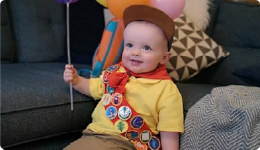Time management and good routines help you find the time for all the things you want and need to do. It helps you decide which things are urgent and which can wait. Learning how to manage your time, activities and commitments can be hard. In the long run it can make your life easier, less stressful, and more meaningful.
The video below has strategies and advice about time management and routines.
Understanding Time
Learning about time and being able to tell roughly how long you have been doing a task can help you to manage your time. This can be hard. Understanding time can help your awareness of how long it takes to complete an activity and can help you to complete tasks within a certain time. Here are some activities to help you to develop your awareness of time:
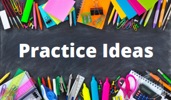
Understanding a Minute
Set a timer for one minute and then see if you can sit still or stay quiet for a minute. Seeing a clock, counting out loud, watching sand in an egg timer or hearing a clock tick might help. Now get someone else to say go and watch a clock, see if you can predict when one minute is over. You can try this with 5 or 10 minutes too. Use a timer to see if you can get dressed in 10 minutes; pack your school bag in 5 minutes and brush your teeth for 2 minutes.
Understanding a Second
Listen to a ticking clock with a second hand and count the seconds aloud. Watch a second pass by looking at the movement of the second hand of a clock. Nod your head in time as you watch. Count the seconds for short activities that take under 10 seconds, like watching a dog eat their food, filling a glass of water etc.

If your child is at the earlier stages of learning about time you might want to try the following activities:
- Discuss day and night and how meals can tell you about what time of day it is.
- Try using a visual timetable to help your young person understand when different activities happen throughout the day.
- Try a weekly, monthly or yearly calendar with important events marked on them.
- Talk about the present, past and future, like “at 10 o’clock we did some Maths. What will we do at 11’clock?”.
Routines
Do you have a set morning, after school and or bedtime routine? Having a routine can save you time.
Mornings
Think about what you need to do in the morning to make sure you get to school on time. Here are some of the activities you might do in the morning before school.
- Have a shower
- Get dressed
- Eat a healthy breakfast
- Brush your teeth
- Pack your bag
- Walk or get the bus to school

Morning Routine Time Activity
Complete this activity with your parent or carer. Download both sheets How Long it Takes Me To (Young Person Version) and How Long it Takes My Child To (Adult Version). Think about how long it takes you to complete morning tasks and then time yourself. Did you guess right or do you need to allow for more time in the morning?
Morning Routine Assistance Activity
Complete this activity with your parent or carer. Download both sheets What I do for myself / What I get help with (Young Person Version) and What my child does for themselves / What I help with (Adult Version). Once you have both completed your lists compare these. How much do you do for yourself and how much do you get help with? Could you be doing more for yourself?
Morning Routine Timetable / Checklist
Now that you know what activities you need to do, how long they take and what you need help with try making a visual timetable or morning checklist. You could use our blank Morning Checklist or Morning Timetable. You could set reminders on your phone to keep you on track.
After School and Evenings
Now that you have planned your morning it might help to do the same for your after school and evening routine. Think about what you need to do after school and before bed each day. Remember to include time for homework as well as time with friends or doing leisure activities. Also think about any activities you could do at night instead of in the morning, for example you could pack your school bag before bed. You could make a packed lunch and put it in the fridge. Remember to set your alarm for the next morning. You could try our After School Checklist and Bedtime Checklist.
Have a look at our Routine section here for more advice about creating a routine.
Planners, To Do Lists and Timetables
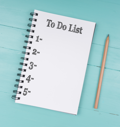 Planners and to do lists can help to keep you organised. Everyone has different ways of working. You will need to find what works for you. You will have homework for different subjects that will need to be handed in at different times. Some schools give you a diary/planner to help with this. Some people prefer to use the calendar on their phone. Below are some examples of daily and weekly planners that you might find helpful.
Planners and to do lists can help to keep you organised. Everyone has different ways of working. You will need to find what works for you. You will have homework for different subjects that will need to be handed in at different times. Some schools give you a diary/planner to help with this. Some people prefer to use the calendar on their phone. Below are some examples of daily and weekly planners that you might find helpful.
Planner Examples
To Do List Apps
- Google Keep (iPhone and Android)
- Evernote (iPhone and Android)
- TimeTune (Android)
- Todoist (iPhone and Android)
- Any.do (iPhone and Android)
Timetables
When you are at secondary school you will be given a timetable. It is important to check your timetable because it tells you which subjects you have, who your teacher will be and which room to go to. It also tells you the start and end time of the period and any breaks. You can use this information to work out what equipment you need to pack in your school bag.

Timetable Activity
Complete this activity with a friend or family member. Using the black/white timetable get your helper to ask you to find a subject. Now try same using the coloured timetable. Which timetable was easier? If the coloured timetable was easier to use you could pick a colour for each of your subjects and colour in your timetable.



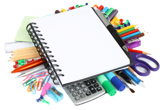 plan for the day ahead
plan for the day ahead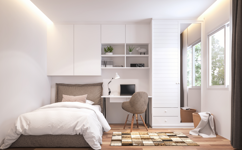 Tidy your room. Identify a place or container for each belonging. This will make things easier to find.
Tidy your room. Identify a place or container for each belonging. This will make things easier to find.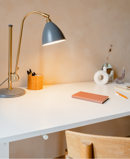 Some people like to set up a workstation where they can complete their homework or study. A workstation is a small area where you can work with as little distraction as possible. You need to look for a space at home that is quiet. It can help if this is away from windows and doors. Put a table and chair facing the wall. Make sure the walls are clear, the only thing that might be helpful is a visual planner or to do list. Make sure you have all the equipment you need close by. Only put what you need for each task on the table to keep it clutter free. If you are distracted by noise, try wearing headphones.
Some people like to set up a workstation where they can complete their homework or study. A workstation is a small area where you can work with as little distraction as possible. You need to look for a space at home that is quiet. It can help if this is away from windows and doors. Put a table and chair facing the wall. Make sure the walls are clear, the only thing that might be helpful is a visual planner or to do list. Make sure you have all the equipment you need close by. Only put what you need for each task on the table to keep it clutter free. If you are distracted by noise, try wearing headphones.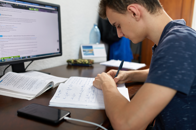 Set up a weekly routine. Think about:
Set up a weekly routine. Think about:

